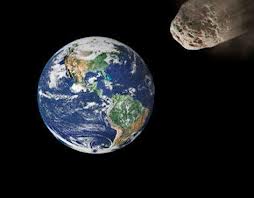 Next week, a 45 meter-wide space rock will zoom safely by. But as far as cosmic distances go, it will be a close shave.
Next week, a 45 meter-wide space rock will zoom safely by. But as far as cosmic distances go, it will be a close shave.Asteroid 2012 DA14 will make close approach on Feb. 15, flying closer than geosynchronous orbit (27,700 kilometers or
17,200 miles or 1/13th the Earth-moon distance). So unless you’re a communications satellite, you have nothing to fear. But even if you were a communications satellite, it’s unlikely you’d get swatted by the asteroid juggernaut as space is really, really big.
“NASA’s Near-Earth Object Program Office can accurately predict the asteroid’s path with the observations obtained, and it is therefore known that there is no chance that the asteroid might be on a collision course with Earth,” asteroid hunters at NASA’s Jet Propulsion Laboratory in Pasadena, Calif., announced on Feb. 1. 2012 DA14 was discovered in February 2012 by the La Sagra Sky Survey in Spain, so its orbital trajectory is very well known.
But the rock will come close enough to Earth’s gravitational well so its orbit will be dramatically modified — after its near-Earth encounter, asteroid 2012 DA14′s orbital period around the sun will be shortened from 368 to 317 days.
So, far from this being a worrying event, the 2012 DA14 flyby will be an incredible opportunity for amateur astronomers and scientists alike. Viewers in Europe, Asia and Australia should be able to spot the asteroid flyby using binoculars or low-powered telescopes. Unfortunately, according to SPACE.com, viewers in the US will be out of luck — the asteroid will be too faint to spot by the time the Earth rotates, bringing the 2012 DA14 into view.
But NASA plans on pinging the asteroid with its Goldstone radar in the Mojave Desert, Calif., so we might better understand its composition and surface features. More details about NASA’s observation plans will be announced on Thursday.
It’s worth noting this cheery little fact, however. Asteroid 2012 DA14 is a substantial chunk of space rock and if something that size did hit Earth, it would cause crippling damage on a local scale. 2012 DA14 has an estimated mass of 130,000 metric tons — that’s larger than the gross tonnage of the Costa Concordia cruise ship.* It is believed the object that wiped out a region of forest in Tunguska, Siberia in 1908 was the approximate size of 2012 DA14 — that’s an event we would not want to happen over one of the world’s metropolitan areas.

